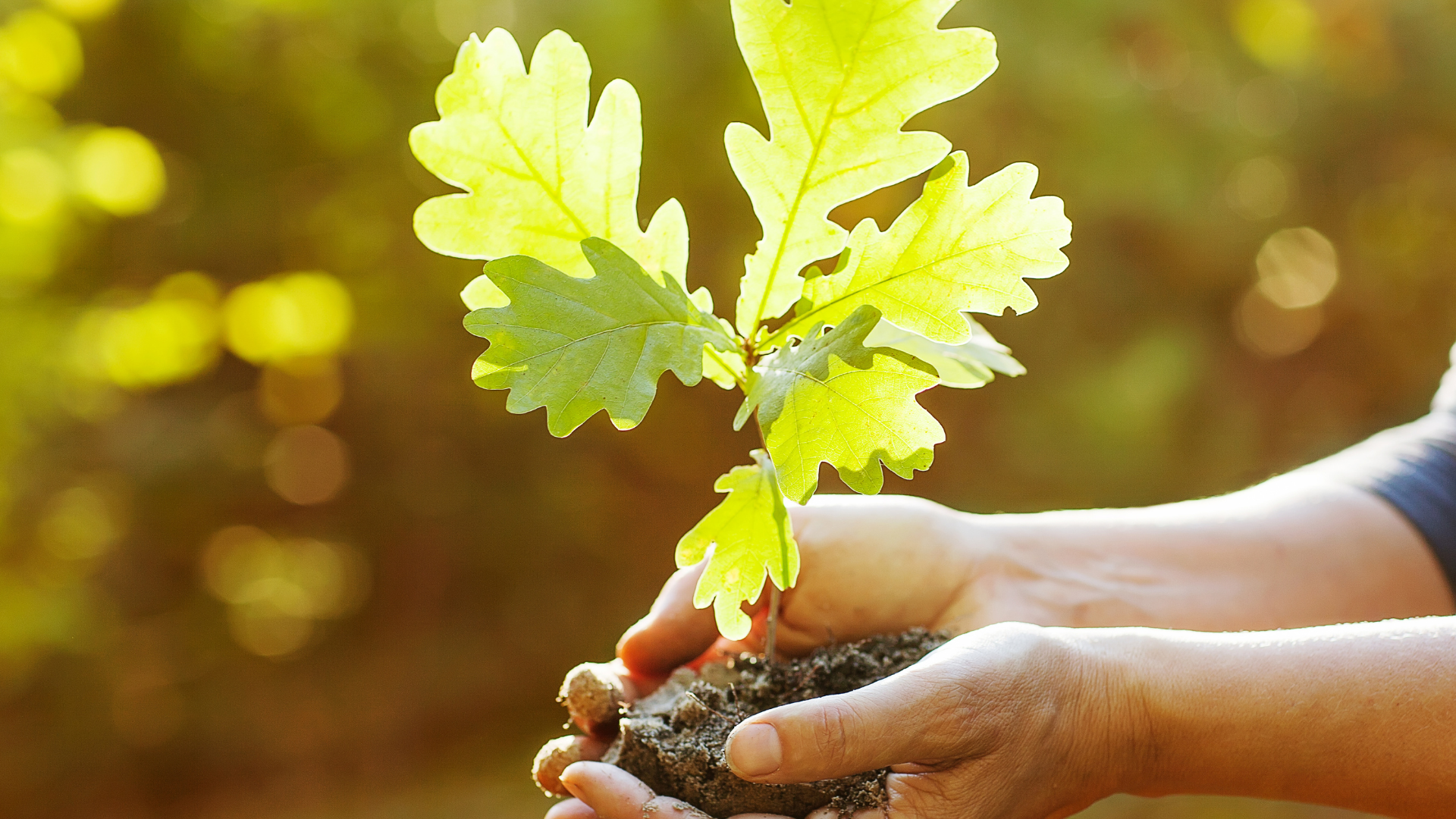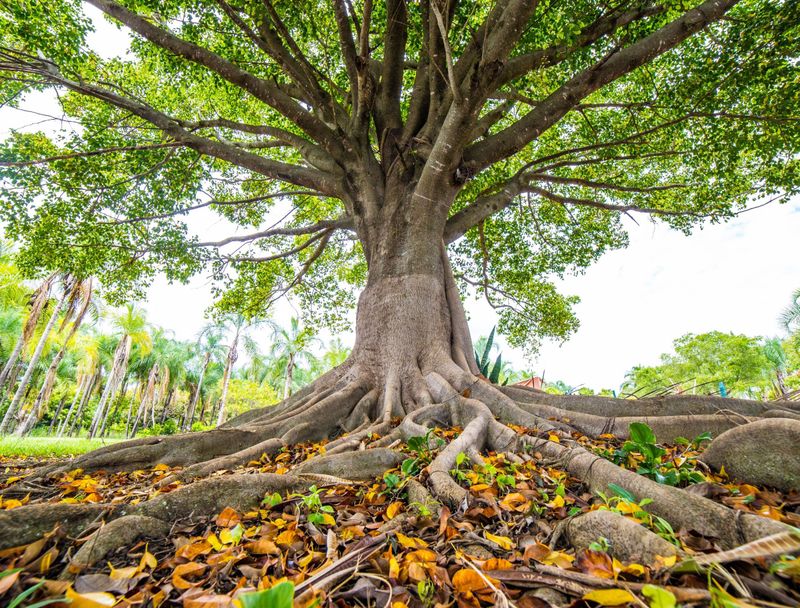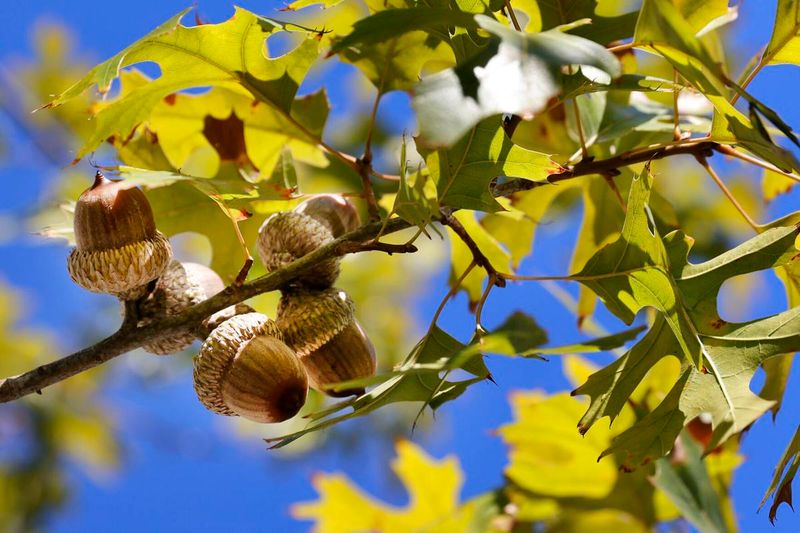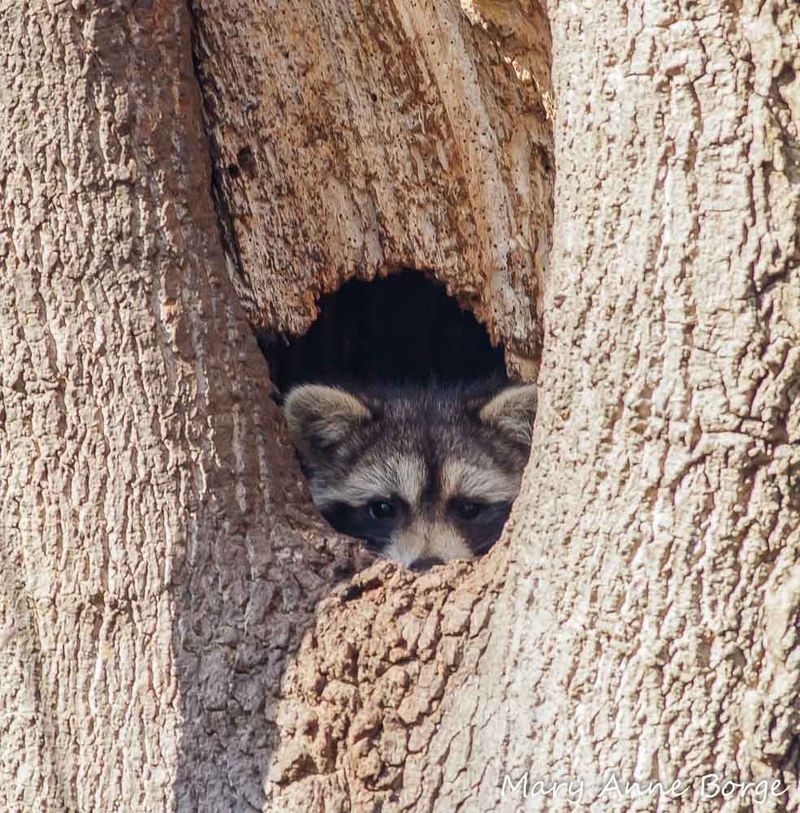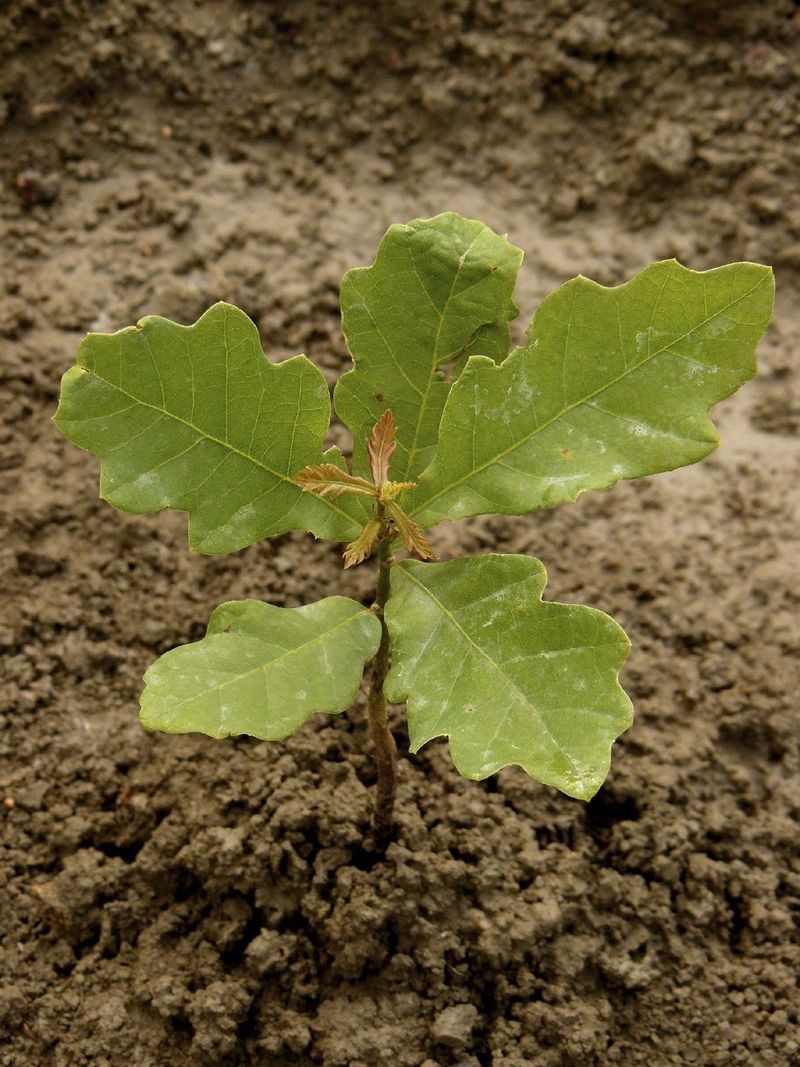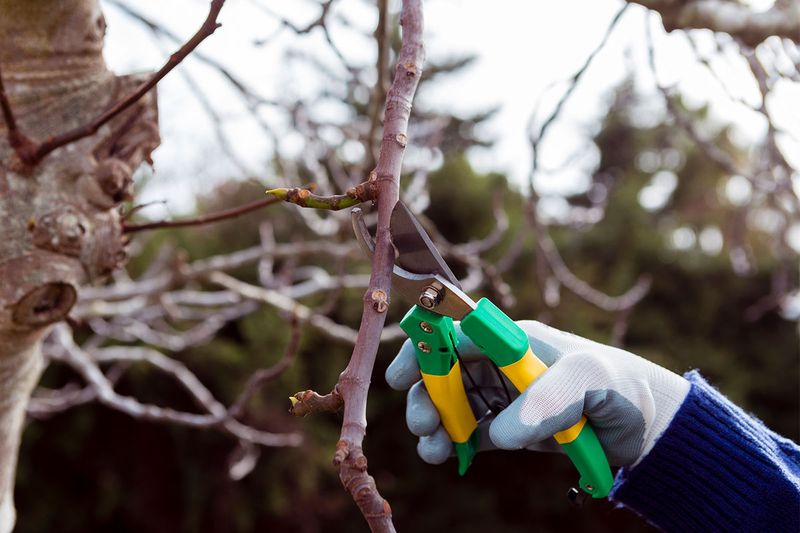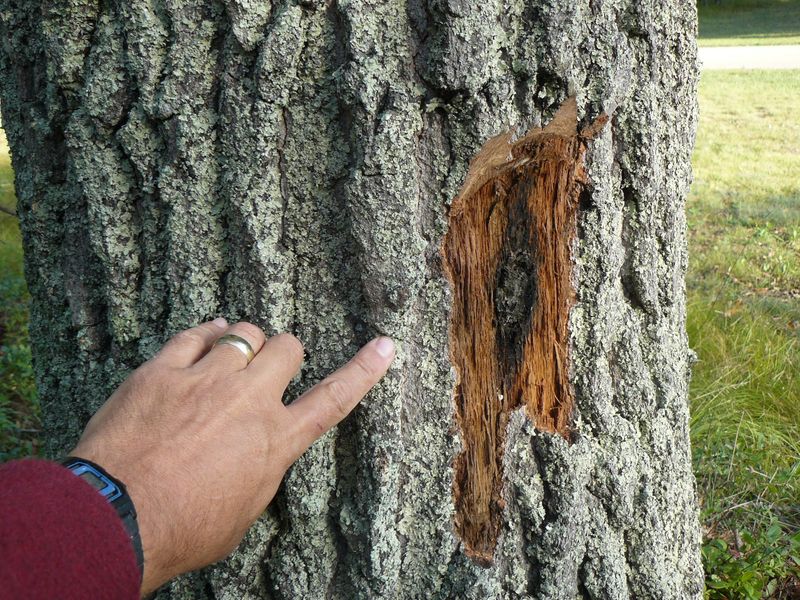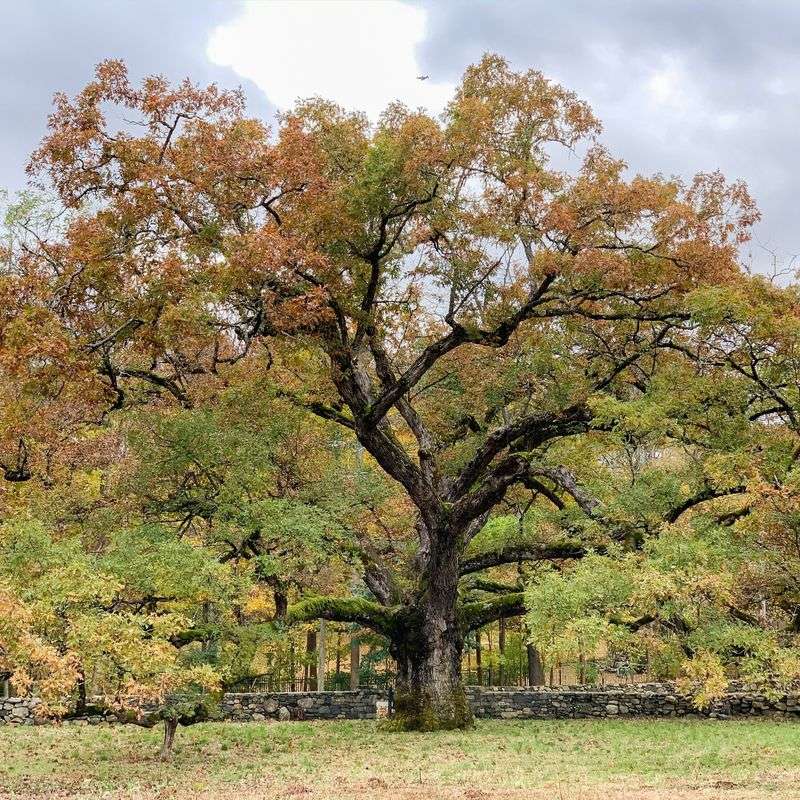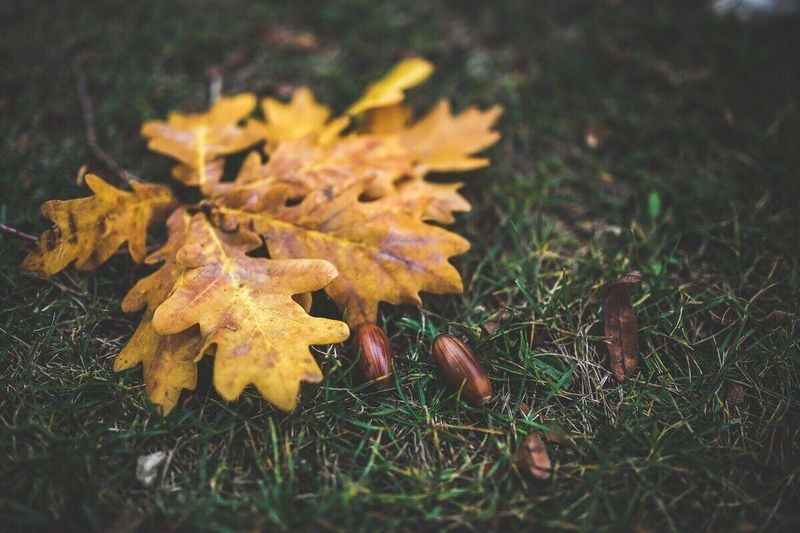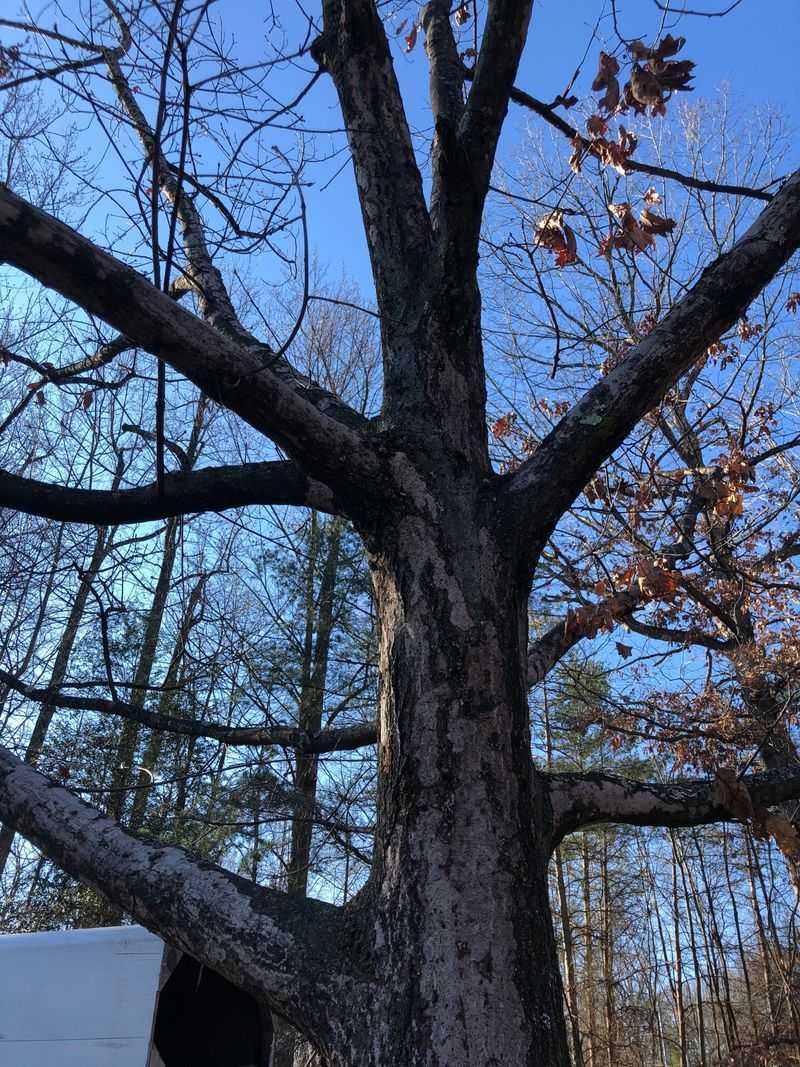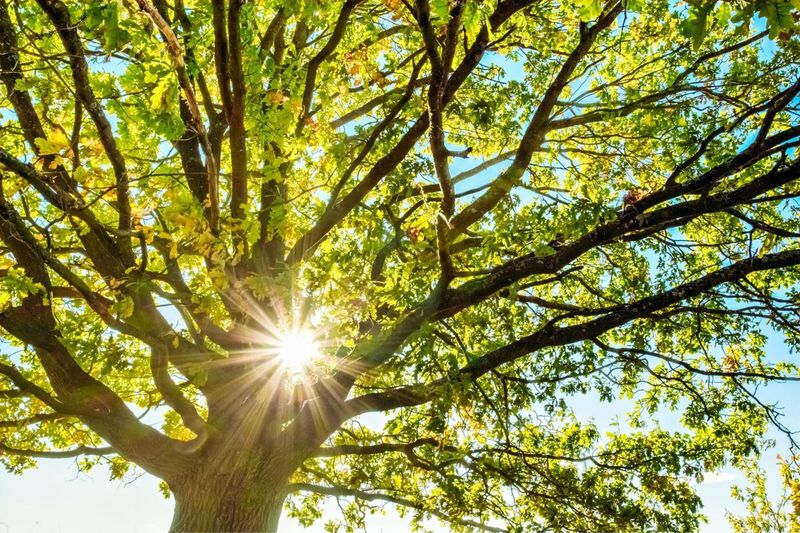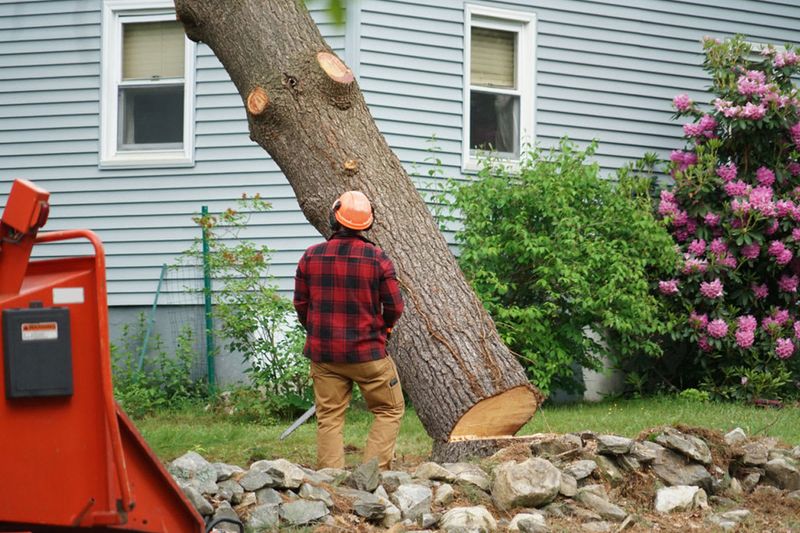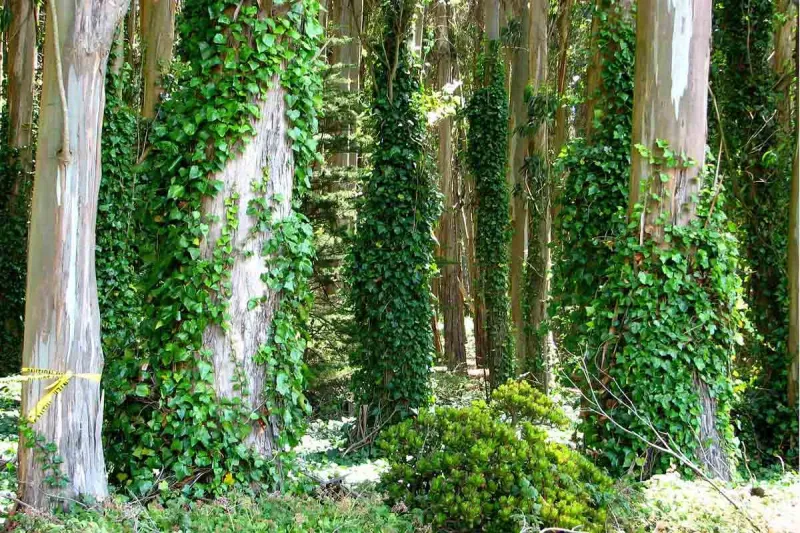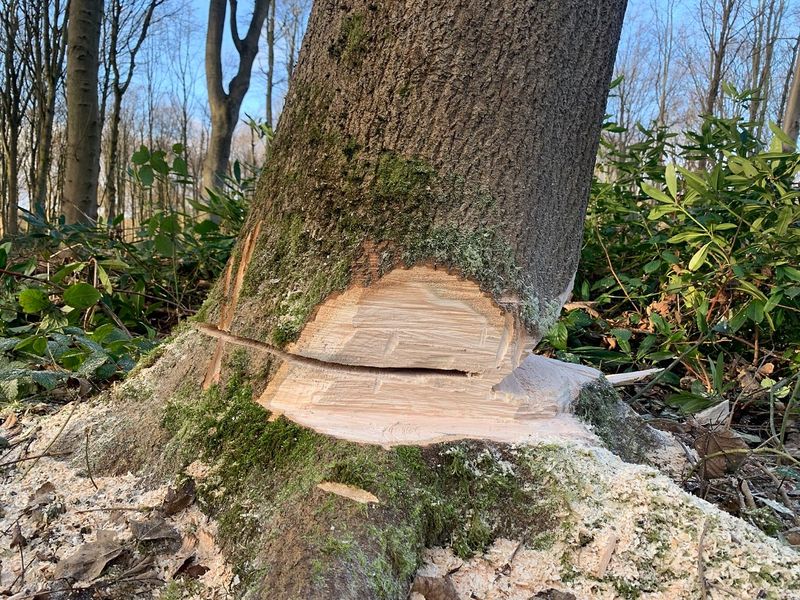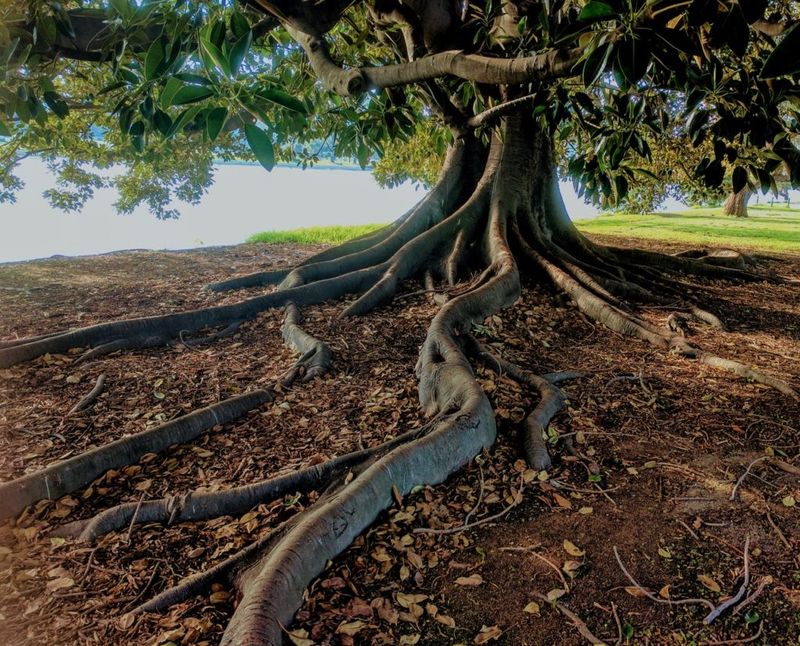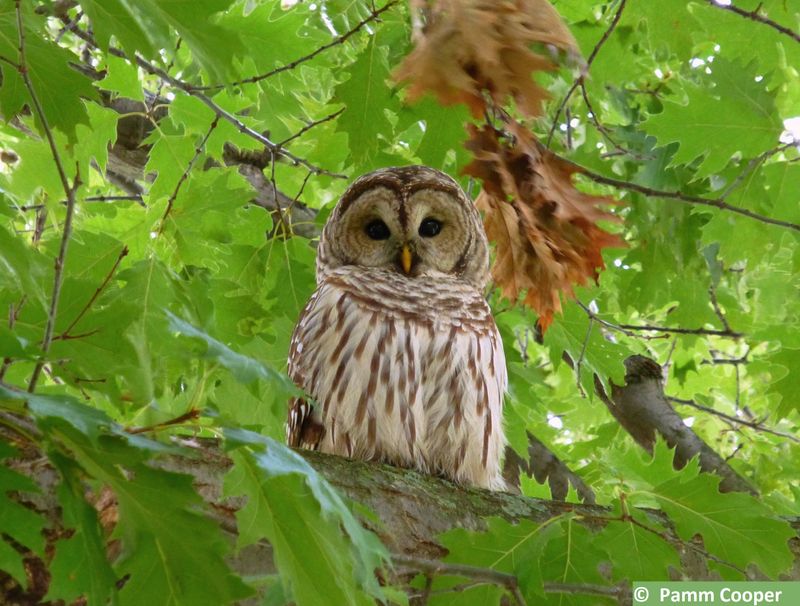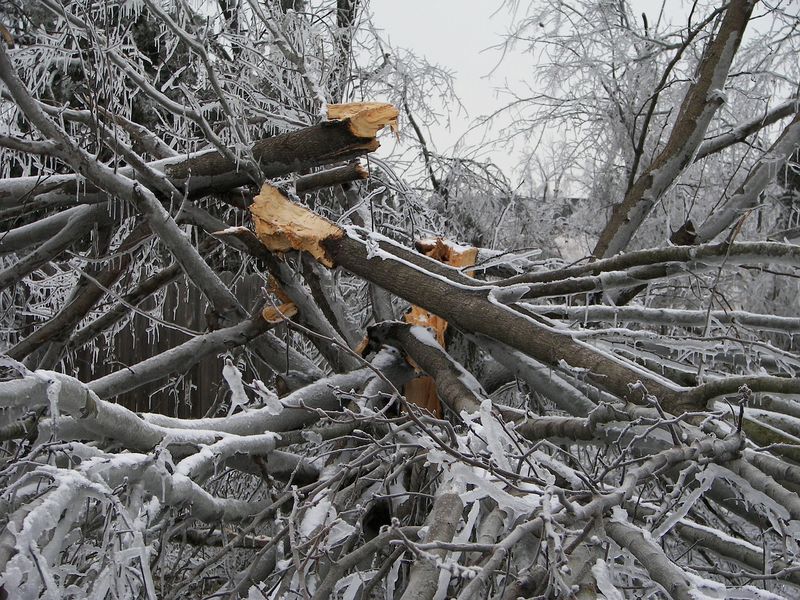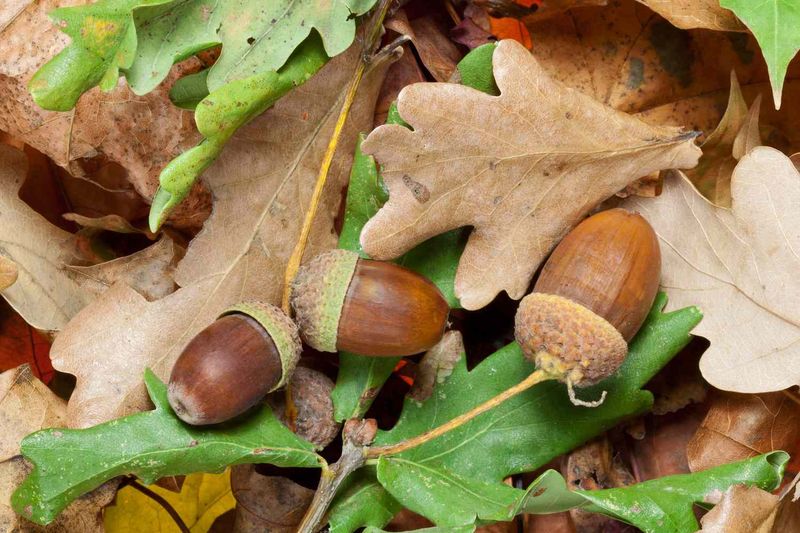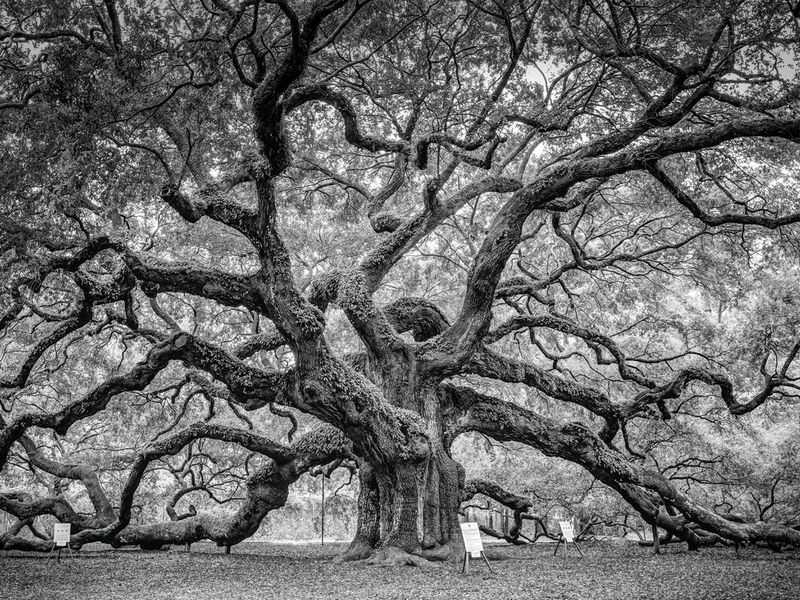Ever considered planting an oak tree? Sounds like a great idea, right? You get shade, wildlife, and a majestic tree, but trust me, it’s not all sunshine and acorns.
As someone who’s lived through several acorn wars (aka, the battle of finding them everywhere), let me tell you, oak trees come with a few quirks.
I planted one, thinking it would be a peaceful giant, but before I knew it, I was dodging falling acorns, battling stubborn roots, and wondering if my lawn had declared war.
Sure, oaks are beautiful, but they might just turn your yard into a battlefield!
1. Massive Root Systems
Roots can be a real pain – literally. The oak’s roots invade anything in their path, turning your yard into a potential tripping hazard.
Picture this: you’re hosting a backyard party, and Aunt Mary trips over those gnarly roots. Awkward, right? Plus, these roots can damage sidewalks and plumbing, adding frustration to your gardening dreams.
If you value a smooth lawn and your guest’s safety, it might be wise to think twice about planting an oak in your backyard.
2. Messy Acorn Rain
Imagine stepping outside to a constant barrage of acorns. Oak trees have a penchant for dropping endless acorns, turning your yard into a messy battlefield.
You go out for a morning jog and end up crunching acorns underfoot. Not only does it make for a slippery situation, but it also attracts critters who love these nutty treats.
For someone who cherishes a clean yard, dealing with this nutty deluge might not be the right fit.
3. Attracts Wildlife
Get ready to welcome the neighborhood wildlife to your backyard. Oaks are a haven for squirrels, birds, and various insects, turning your yard into a mini zoo.
While watching these animals can be delightful, they also bring noise and potential damage. Picture early morning bird calls or squirrels munching on your garden produce.
If peace and quiet are what you seek, having an oak in your garden may not align with your idyllic vision.
4. Pollen Allergies Galore
Springtime brings an unexpected gift: pollen. If you’re prone to allergies, an oak tree might not be your best friend.
The tree releases copious amounts of pollen, turning allergy season into a sneeze fest. Imagine enjoying a peaceful afternoon, only to be interrupted by relentless sneezing and itchy eyes.
For allergy sufferers, this could mean countless hours indoors or a medicine cabinet full of antihistamines. Opting for a less pollen-heavy tree might just save your sinuses.
5. Slow Growth
Patience isn’t just a virtue; it’s a necessity with oaks. These trees take their sweet time to grow, unlike other species that shoot up quickly.
You might plant one today and still find it barely taller than you a decade later. For those dreaming of fast shade or a quick landscaping fix, the sluggish growth rate can be a deal-breaker.
If you’re in a hurry to see results, you might want to explore speedier options for your yard’s centerpiece.
6. Extensive Pruning Needs
Pruning isn’t just a once-a-year chore with oaks. These mighty trees demand regular attention, their branches growing willy-nilly and often needing a trim.
Grab your shears because neglecting this task can lead to overgrowth and potential hazards. Picture branches scraping against your windows during a storm or falling unexpectedly.
A commitment to frequent pruning is essential, so if you’re not up for the task, perhaps reconsider introducing this demanding diva to your yard.
7. Susceptible to Diseases
Oaks, despite their grandeur, aren’t immune to ailments. They can fall prey to diseases such as oak wilt or powdery mildew, which can make their leaves droop and branches wither.
Imagine nurturing your tree for years, only to see it succumb to disease. This vulnerability can lead to costly treatments or even the tree’s removal.
If you’re not ready to tackle these potential health issues, seeking a hardier species might be wise for your landscape.
8. High Water Consumption
The thirst of an oak knows no bounds. These trees gulp down water like nobody’s business, leaving the surrounding soil parched.
If you’re in an area with water restrictions or simply want to conserve resources, an oak might not be your ally. Consider the additional water bills or the guilt of seeing your grass turn brown.
Opting for a less water-hungry plant could ease your conscience and help your garden thrive more sustainably.
9. Hard-to-Remove Leaves
Leaves, leaves, everywhere! Come fall, an oak tree sheds its foliage like there’s no tomorrow, turning your yard into a leafy sea.
Raking becomes a never-ending task, and those leaves aren’t quick to decompose either. Imagine spending your weekends battling a leaf pile the size of a small car.
For anyone who dreads yard work or prefers a low-maintenance garden, the avalanche of leaves might be a bit much to handle.
10. Potentially Dangerous Limbs
When storms roll in, the oak’s branches can pose a serious threat. They can break off unexpectedly, damaging property or causing injury.
Picture a surprise limb drop onto your car or even worse. This unpredictability can cause anxiety for homeowners, especially in storm-prone areas.
If you value your peace of mind and the safety of your loved ones, choosing a tree with a less menacing reputation might be the way to go.
11. Limited Sunlight for Other Plants
The shade provided by an oak can be more curse than blessing. It blocks sunlight, making it tough for smaller plants to flourish underneath.
You might find your precious garden struggling to survive in constant shadow. For those who dream of a sunlit garden full of blooms, the dense shade can be a significant drawback.
Considering how much you value that sunlight, you might want to rethink adding this giant to your yard.
12. Expensive Removal Costs
When an oak outgrows its welcome, removing it isn’t as simple as grabbing a saw. It’s a costly and labor-intensive process that can leave a dent in your wallet.
Imagine hiring a team of arborists, cranes, and hours of labor to tackle the task. For budget-conscious homeowners, the potential removal cost could be a major deterrent.
If you’re looking to avoid unexpected expenses, a tree with a less hefty removal fee might be more appealing.
13. Invasive Species Risk
Though not always the case, certain oaks can become invasive, overshadowing local flora. This dominance can disrupt the natural ecosystem, leading to a loss of biodiversity in your backyard.
Picture your garden turning into a monoculture, with few native plants able to compete. For avid gardeners who cherish variety, the risk of an oak overtaking your yard might not be worth it.
Opting for a more harmonious plant might better preserve your garden’s diversity.
14. Hardwood Harvesting Temptation
The allure of oak wood is undeniable, leading some to consider harvesting their tree for timber. But this can lead to a patchy yard and fewer trees in your landscape.
Imagine a once lush yard now barren, all for the sake of a few planks of wood. If you value a full canopy and the aesthetic beauty of trees, this temptation might not align with your gardening goals.
Keeping the forest intact might just be the better choice.
15. Difficulty in Landscaping
Landscaping becomes a bewildering puzzle with oak roots in the mix. Their sprawling system makes it tough to add patios, ponds, or even simple flower beds.
Picture trying to dig for a new garden path and hitting root after root. For homeowners ready to transform their yard into a picturesque oasis, these underground obstacles can be a significant hurdle.
Choosing a more landscape-friendly tree might pave the way for your dream garden.
16. Bird Droppings
Feathered friends mean a mess. Oaks attract birds, which in turn, bring droppings that can mar patios, vehicles, and more.
Imagine a freshly washed car or pristine patio furniture splattered with bird souvenirs. For those who cherish cleanliness, this constant cleanup can become tiresome.
If maintaining a spotless yard is a priority, opting for a less bird-friendly tree could save you time and elbow grease.
17. Fire Hazard
Dry leaves and twigs can be a recipe for disaster, especially in fire-prone areas. Imagine the worry of potential fires every time summer rolls around.
For those living in regions with fire risk, an oak might add unnecessary anxiety to your life. If peace of mind is what you seek, considering a tree with less flammable foliage could be a safer bet.
Choosing wisely might keep both your yard and neighborhood secure.
18. Winter Ice Damage
Winter brings its own set of challenges as oak trees can accumulate ice, causing branches to snap. Imagine waking up to the sound of cracking branches on a frosty morning.
This can lead to property damage and an unexpected cleanup. For those experiencing harsh winters, the susceptibility of oaks to ice damage can be a major concern.
Opting for a cold-tolerant tree might ease the winter blues and safeguard your property.
19. Limited Fruit Production
If you’re dreaming of an edible bounty, oaks might disappoint. Their acorn production can be sporadic and unpredictable, leaving you with little harvest.
Picture waiting eagerly for a bountiful year, only to be met with sparse offerings. For those who enjoy foraging or providing for wildlife, this inconsistency can be frustrating.
Choosing a tree with more reliable fruit production might better satisfy those culinary or ecological aspirations.
20. Historical Property Restrictions
For homes with historical significance, an oak might pose limitations. These trees can be protected, making it difficult to alter your property or remove the tree if needed.
Imagine finding out your plans for extension or renovation are thwarted by preservation laws. For those in historical districts, these restrictions can limit your flexibility.
In this case, you should go with a less regulated plant that might give you the freedom to shape your property as you desire.

